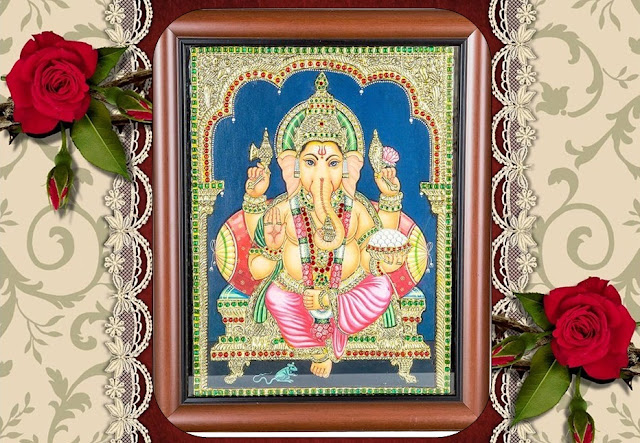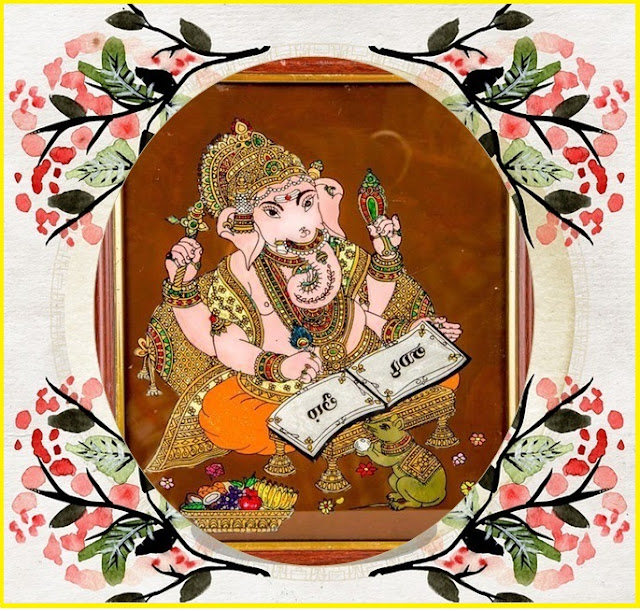 |
Rs 2,599.0
|
You never get tired of watching those beautiful paintings on the wall – do you? Well, they are indeed extremely beautiful.
Drawing or painting on the walls has a history that goes down nearly 32,000 years ago, Wall Mural Painting being one of the earliest known forms of this art. Origin of this form of art can be traced through southern France around the 30,000 BC. Later evidence trace all across the world from ancient Egypt, Minoan civilizations, Pompeii; and Italy, Mexico apart from in the Hindu temples of Kerala and the famous Ajanta Caves of Maharashtra in the medieval period.
 |
Rs 12,299.0
|
The Murals in the state of Kerala date back to between the 9th and the 14th Century A.D and mostly depict mythology and legends. They are found on the walls of temples and churches of South India, primarily Kerala. The most famous ones located in places like Thiruvananthapuram Kayamkulam, Mannarkkad Palakkad District, while the oldest and largest are to be found in the churches all across the state of Kerala.
On the other hand, Murals of the Ajanta Caves depict themes and stories from the Jataka Tales and are dated as early as the 7th Century A.D.
While there are many contemporary methods of Mural Painting, there are a few methods from the past worthy of mention.
 |
Rs 1,599.0
|
The oldest known methods include Tempera, where the pigments are bound in an aluminous medium like egg yolk or egg white diluted in water.
Another technique is where one affixes a painted canvas to the wall using some kind of adhesive that hardens as it dries, like cement plaster; and thus used as a mural.
Historically, artists used several types of adhesives including rabbit skin glue. White lead ore or Cerussite was used in the 19th and 20th centuries in the mixture to help it dry.
In Greco-Roman times, beeswax was heated, to which colors were added and applied on a prepared wooden or canvas surface to make murals.
 |
Rs 2,599.0
|
In 16th-century Europe, oil painting on canvas arose as an easier method for mural painting. The advantage was that the artwork could be completed in the artist's studio and later transported to its destination and there attached to the wall or ceiling.
Murals now are found in different shapes, sizes and forms and are generally used for interior designing. Some of the common types of murals thus used include Graffiti-style murals, Ethnic murals, Tile Murals etc.
Thus, murals may be used to decorate one’s household and also adorn the altar, the temple or church to give it an ancient, eternal and divine touch.
 |
Rs 1,499.0
|
 |
Rs 349.0
|
In the ancient time of India there are lot of magnificent and passionate paintings available but with the flow of time their existence became extinct. But one of those magnificent painting still manages to catch up to the modern time and that is Tanjore painting.
In the history the first known Tanjore panting is said to be almost 40,000 years old. After that Tanjore paintings goes through various stage of evolution. For the first time in India Tanjore painting made in Thanjavur, a city in Tamil Nadu and for the design various precious original stones and pure gold foils were used. To bring out its bright colour oil paints were used which also help it to stay the same for a long period of time.
Design used in Tanjore paintings: Chettinad design and Mysore design are the most popular design found in Tanjore paintings.
1. Chettinad Tanjore paintings: Tanjore paintings that used this Chettinad design was originated in the same place as the first Tanjore painting in Tamil Nadu a city named Thanjavur. Thick lines, bold colours, appropriate shapes designed that balance the every line of the painting is the specialty of this type of Tanjore painting. With the use of appropriate colours the artisans make sure that there are not any kind of out of shape things available in the paintings. It is found that this type of design was alive around 1600 A.D.
 |
Rs 449.0
|
2. Mysore Tanjore paintings: This type of design in Tanjore painting was found around 2nd century B.C. to 7th century A.D. Mysore Tanjore paintings originated in Karnataka in a city named Mysore. Delicate lines, intricate brush strokes, graceful delineation of figures are the specialty of this kind of Tanjore paintings. The graceful figures are mostly gods and goddesses as these paintings were designed to inspire the feeling of devotion. Other specialty of this Mysore design that it used various bright vegetable colours and lustrous gold leaf as designs.
Tanjore paintings are very unique and authentic and said to bring positive energy to home. To design these paintings lots of precious and semi-precious stones and pure gold foils were used by the artisans, which fill in as ornaments and clothing for various graceful figures that are mainly Hindu mythological gods such as Shiva, Vishnu, Lakshmi Tanjore painting, Sarastwati, Parvathi, Krishna, Radha, Ganesha , Nataraja etc.
Tanjore paintings do effected heavily by the modern times but the artisans still trying their best so that these paintings can survive in the modern world. The changes in the Tanjore paintings are the material used in the design while the main design remains the same.
 |
Rs 6,999.0
|
 |
Rs 6,299.0
|
Tanjore painting was a famous art of ancient India around several hundred of year ago and now in a verse of extinction. Now only a handful of people know about its existence, importance and significance.
The history of Tanjore painting is very old and somewhat untraceable. The first and oldest Tanjore painting which are known are said to be approximately 40,000 years old. The painting is made in the city of Tamilnadu named Thanjavur in India for the first time and it was designed with various precious stones and gold foils. To have a brighter colour and to have a longer life there is a use of oil paints in these Tanjore paintings. This is the reason throughout the ages these painting remain the same.
 |
Rs 449.0
|
There are mainly to types of design in the Tanjore painting which are Chettinad and Mysore designs:
1. Chettinad Tanjore painting: This type of Tanjore painting is originated in Thanjavur, a city of Tamilnadu, India and lived from almost 1600 A.D. While making these paintings the painter keep in mind to balance thick lines, bold colours, appropriate shapes to draw every line of the painting. Without the question of being out of shape the painter use very appropriate colour for painting.
2. Mysore Tanjore Paintings: This type of Tanjore painting is originated in Mysore, a city of Karnataka. The specialty of this kind of painting is its delicate lines, intricate brush strokes, graceful delineation of figures which are mainly various gods and goddesses. The use of bright colour of vegetable and lustrous leaf of gold are mainly used to inspire the devotion feeling in the time from 2nd century B.C. to 7th century A.D.
 |
Rs 449.0
|
There are some other types of Tanjore painting are also available which are Basohli, Pichwai, Marble, Miniature, Water colours, Glow paintings, etc which also need our attention.
Tanjore is a type of painting which is very unique and authentic. It is said that it bring a special kind of energy to the house that have it. Now to design various types of precious and semi-precious stones and pure gold foils used in it as ornaments and clothing of the graceful figures i.e. now mostly found Tanjore painting are Hindu mythological gods like lord Shiva, Vishnu, Lakshmi, Sarastwati, Parvathi, Krishna, Radha, Ganesha Tanjore Painting etc.
As the modern time comes and lots of ancient cultures are being extinct due to lack of attention, this Tanjore painting also suffer some changing. The main things are the same but the material used to make these Tanjore painting is changed according to this modern era.
 |
Rs 2,599.0
|












